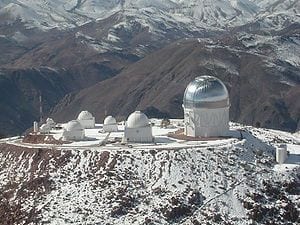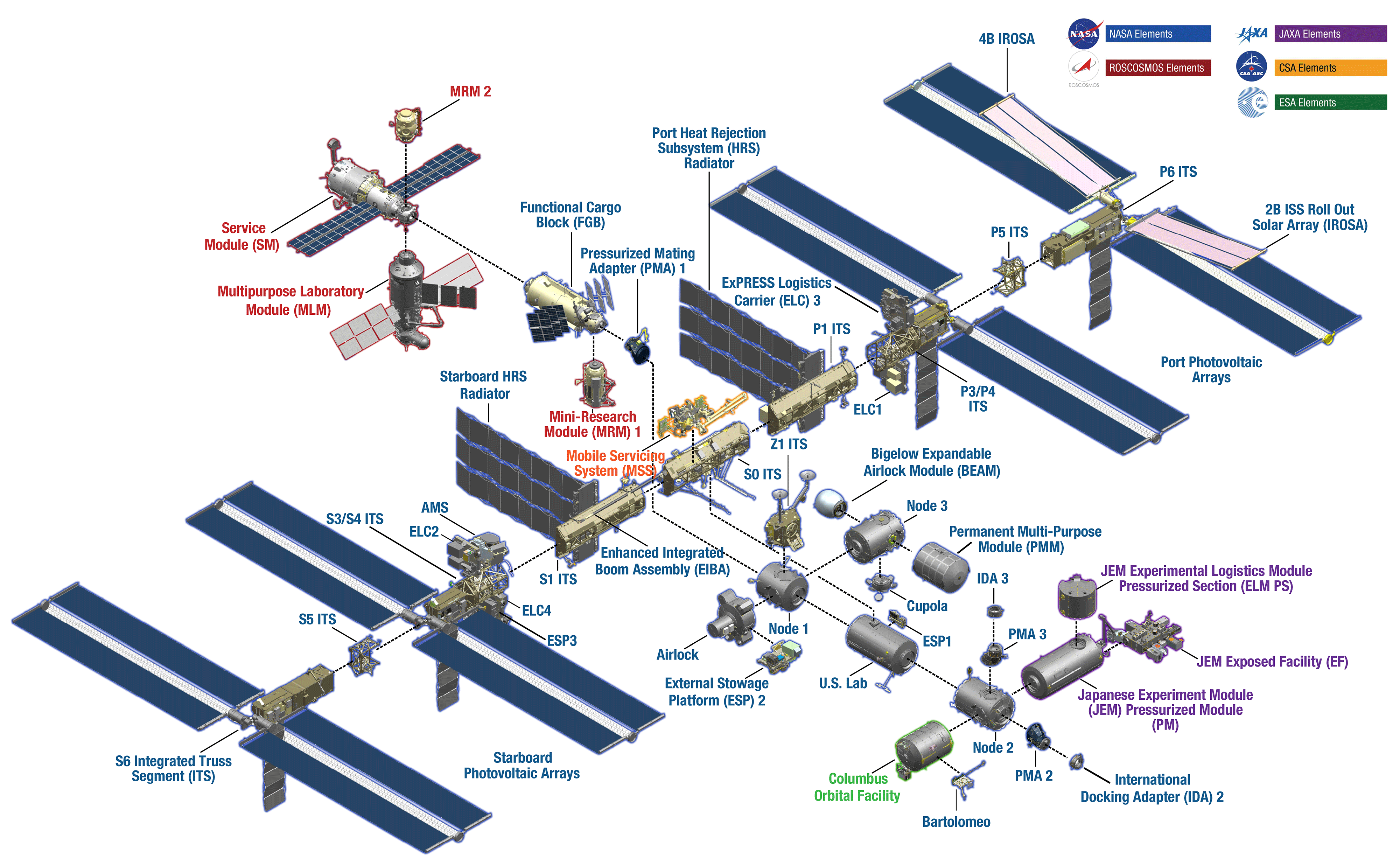
Two rival scientific teams are locked in a high-stakes race to discover other Earth-like worlds—and forever change our own.
From the Chilean seaside town of La Serena, it’s a journey of 80 kilometers to the Cerro Tololo Inter-American Observatory (CTIO), through the Elqui River Valley, past huddled clusters of houses and lush fields of papayas, watermelons, and grapes, gradually dissolving into a sere alpine scrubland of cacti, stunted trees, and sun-warmed dust.
“Tololo” means “edge of the abyss” in the language of the Aymara tribe, indigenous to the region. The name presumably refers to the wide valley the peak overlooks from an altitude of more than 2 kilometers, but it could equally apply to the area’s pristine night skies. Unspoiled by artificial light, the darkness overhead is a vast, enveloping void. On a moonless night, a careless glance upward can halt conversations mid-sentence as observers become lost in the radiant belt of the Milky Way, their shadows cast upon the ground by countless stars shining white, red, blue, and yellow.
A gauntlet of hairpin turns guards the last stretch of road up to CTIO, adding to the aura of hermetic isolation. Astronomers work here, not holy monks communing with God, but the scientists still seek something sacred: knowledge of humanity’s place within creation. They just address such questions more empirically. I arrived in January, summertime in the southern hemisphere, and the housings of large telescopes shimmered in the heat like the domes of mosques. Bailahuen, a native shrub, sweetened the thin air with scents of lemongrass and balsam. The mountain seemed suited for pilgrimages.
I’d come to meet Debra Fischer, a professor at San Francisco State University. As a co-discoverer of more than 150 planets, nearly half the known total outside our solar system, she is a prominent figure in astronomy. Her work on this lonely mountaintop could propel her past that, though, into realms of myth and legend. Fischer is using a modest, neglected telescope at CTIO to search for Earth-like planets in Alpha Centauri, the nearest star system to our own. If they exist, she should find them in three to five years.
The implications would be timeless, echoing ancient questions of life’s purpose, outlining futures distant yet possible. Against the certainty of another Earth circling one of the closest stars in the sky, the entirety of recorded history would abruptly seem the briefest prelude to an eternal denouement, a fire kindled to be passed on without end. Alpha Centauri could become a beacon illuminating and bringing significance to the accumulated toils of generations. Driven by the spectral hope of another living world unexplored, our own could profoundly change. Or Fischer’s project could simply fail. Many astronomers assume it will.
We were scheduled for lunch in CTIO’s cafeteria, but “lunch” meant “breakfast” there, as most of the mountain’s tenants slept in after spending their nights at telescopes. Over their meals, they discussed their hopes for the next generation of world-class observatories, and the globe-gripping economic turmoil that cast all such plans into question. Giant cathedrals of glass and steel could soon sprout on the nearby peaks to wring deeper secrets from starlight, but only if the powers that be find the money and the drive to build them.
Fischer arrived late, yawning, in khaki capri pants and a t-shirt that said “Songs For Moms” (her daughter’s band, she explained—Fischer is married, with three children). She’s slim, with wispy shoulder-length blond hair and the gentle lines that accrue around eyes and mouth from years of smiles. Bernie Walp, an affable, bespectacled telescope technician from California’s Mount Wilson Observatory who was helping set up Fischer’s observations, accompanied her. Both are 55 years old.
After a quick meal, Fischer suggested the three of us go for a hike to discuss the project. She led us to what appeared to be a sheer drop-off that only revealed itself at its edge as a steep 60-degree escarpment, littered with piles of boulders between slurries of shattered rock. “You’re here for a story, but I don’t know what’s going to happen,” she casually mentioned as she clambered down the treacherous hillside. “We’ve been trying to fly under the radar with this project.” There was no reason to make a possible failure highly visible, she said. “But it’s gathered so much momentum now, people are starting to notice.”
We spread out along the slope as we talked, scrambling between handholds and precariously balanced rubble. Fischer’s foot dislodged a fist-sized breccia that fell clattering past me, and suddenly the ground beneath our feet shuddered to life, casting off growing cascades of rocks. A boulder as big as an oven tumbled with a low rumble of shifting stone down toward the distant valley floor until lost from view. We turned back.
As we retraced our steps up toward the observatory, I pressed Fischer on the feasibility of her scheme. She hesitated. “You know, this is a unique opportunity. I don’t really take risks. I only do things when I think I’ve got a reasonable chance of success. It’s like God is screaming at us to look at this system; Alpha Centauri is calling to us.”
Alpha Centauri is today what the Moon and Mars were to prior generations—something almost insurmountably far away, but still close enough to beckon the aspirational few who seek to dramatically extend the frontiers of human knowledge and achievement. For centuries, it has been a canonical target of the scientific quest to learn whether life and intelligence exist elsewhere. The history of that search is littered with cautionary tales of dreamers whose optimism blinded them to the humbling, frightful notion of a universe inscrutable, abandoned, and silent.
The Latest on: Earth-like worlds
[google_news title=”” keyword=”Earth-like worlds” num_posts=”10″ blurb_length=”0″ show_thumb=”left”]
via Google News
The Latest on: Earth-like worlds
- Earth experienced its warmest April on record as US prepares for brutal summer heaton May 7, 2024 at 7:02 pm
Earth has just experienced its 11th-hottest month on record -- a preview of the brutal temperatures forecast for the summer, according to scientists.
- This Could Be How Venus Lost Its Water And Became a Hellish Worldon May 7, 2024 at 5:21 pm
Scientists believe that Venus once looked a lot more like Earth. How it evolved from that point to where it is today is a question with deep implications, not just for our own planet's future, but for ...
- What can early Earth teach us about the search for life?on May 7, 2024 at 10:12 am
Earth is the only life-supporting planet we know of, so it's tempting to use it as a standard in the search for life elsewhere. But the modern Earth can't serve as a basis for evaluating exoplanets ...
- A Laser Zapped the Rocks on Mars and Revealed a Long-Lost Water Worldon May 7, 2024 at 5:00 am
Of course, the Mars of today isn’t so hospitable—it’s atmosphere is nearly non-existent, riverbeds are dried up, and any water is now locked under Mars iron oxide-rich soil or CO2-filled ice caps. In ...
- 8 of the Largest Retirement Communities on Earthon May 6, 2024 at 11:30 am
With advances in medicine and living standards, more and more people are living into their 80s, 90s, and beyond. The number of people in the world aged 65 and older is expected to reach 1.5 billion by ...
- How 'Earth's twin' Venus lost its water and became a hellish planeton May 6, 2024 at 8:00 am
Venus is often called "Earth's twin" because both planets are around the same size and density; they are also both rocky planets located in the inner region of the solar system. Yet, in many crucial ...
- Shock at Traveler's Deadly Cliffside Drive to Reach 'Paradise on Earth'on May 3, 2024 at 10:34 am
Katie went on a two-hour drive on narrow roads with no railings to reach one of the most beautiful places she's ever seen.
- New Evidence Ancient Mars Was More Earth-Like Than Thought – And Maybe Even Habitableon May 2, 2024 at 7:26 am
The findings come from NASA’s Curiosity, which is investigating Gale Crater, the site of an ancient lake. Researchers reported a higher-than-expected level of manganese oxide in the sediment rocks.
- Why does Okefenokee deserve World Heritage status? No place on earth quite like the swampon May 2, 2024 at 2:00 am
Kim Bednarek moved from Jacksonville beaches to Georgia swamp to help Okefenokee National Wildlife Refuge become a UNESCO World Heritage site.
via Bing News










